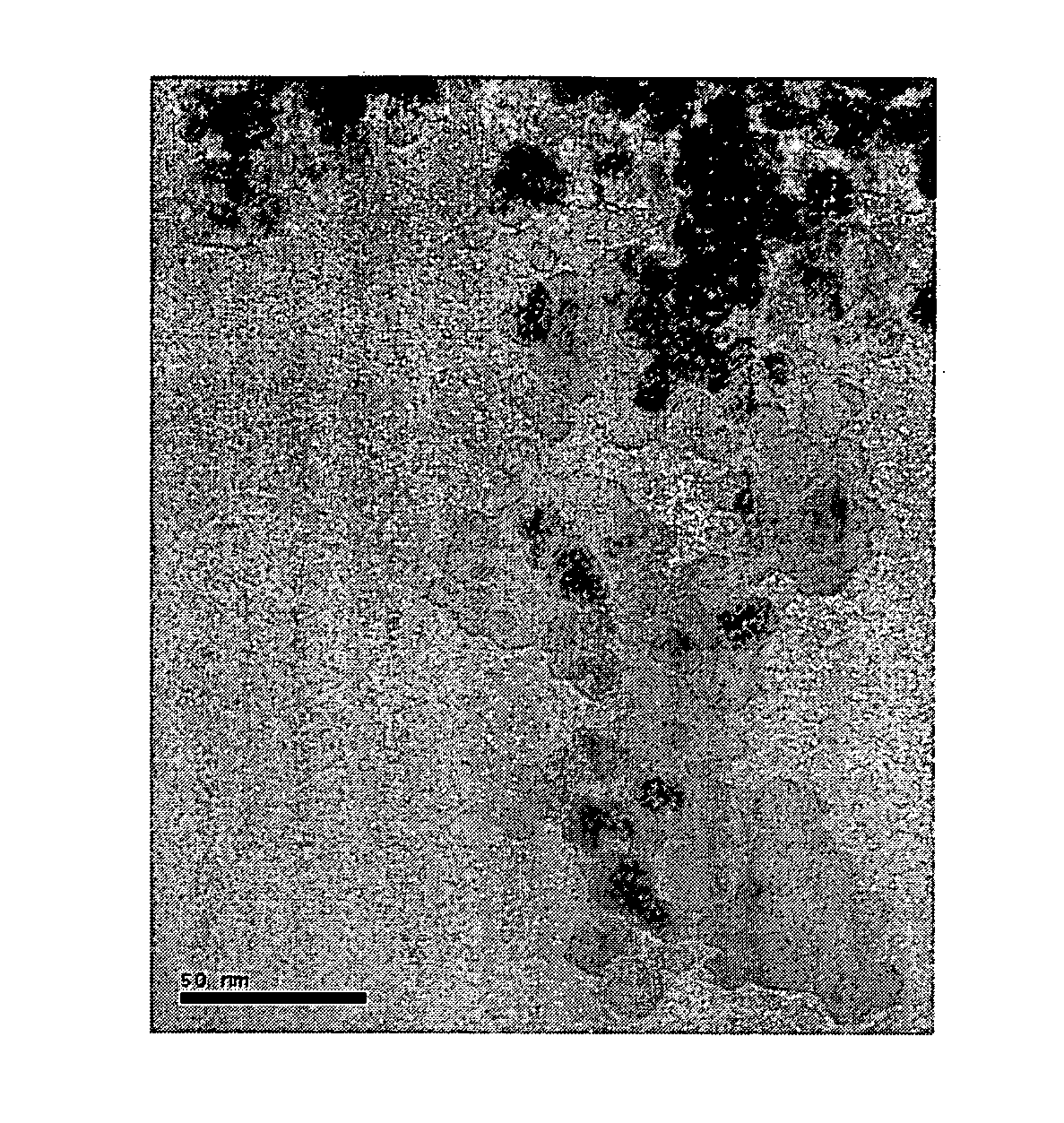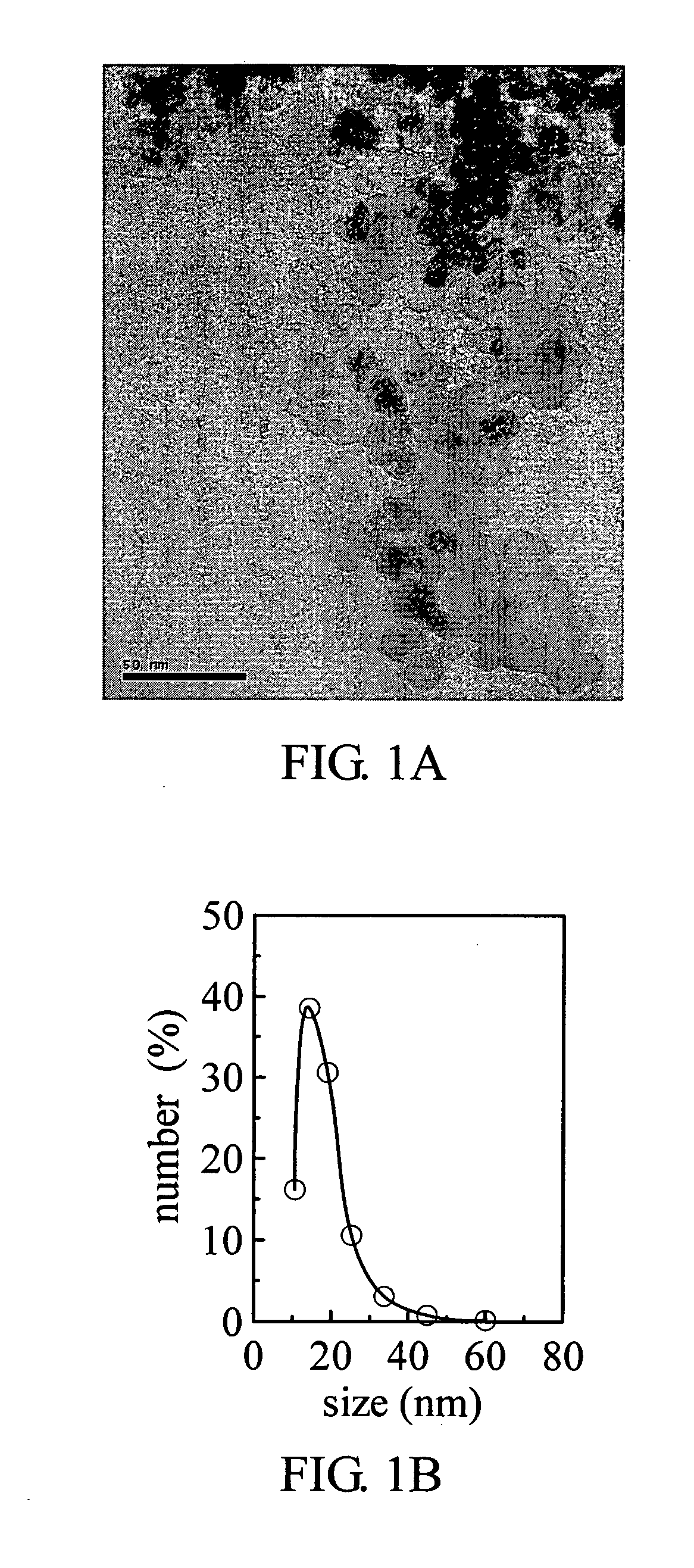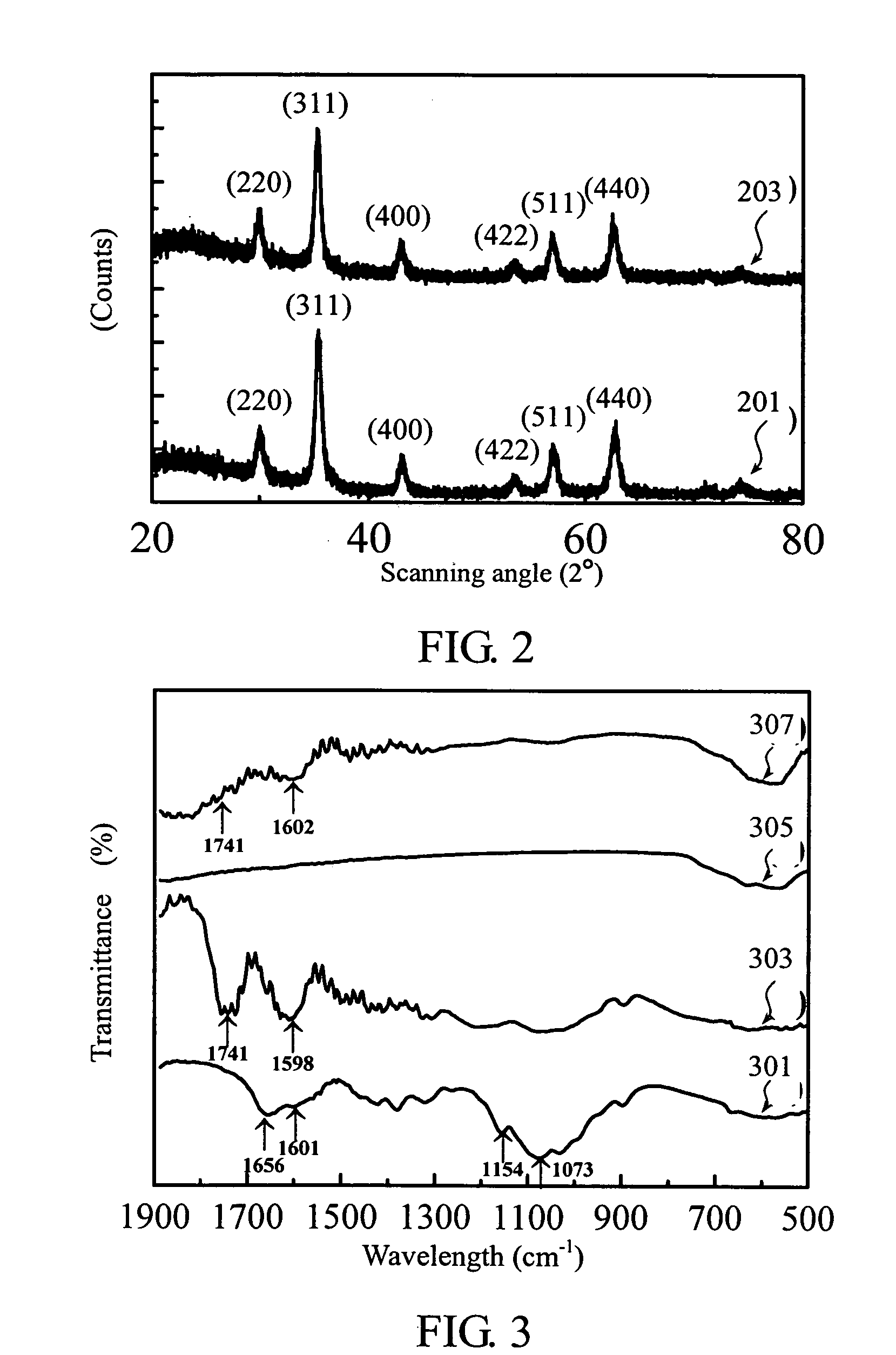Magnetic nanoparticles and method for producing the same
- Summary
- Abstract
- Description
- Claims
- Application Information
AI Technical Summary
Benefits of technology
Problems solved by technology
Method used
Image
Examples
example 1
[0032] The synthetic sequences of chitosan-bound magnetic nanoparticles are outlined in Scheme 1.
[0033] Ferric and ferrous chlorides (molar ratio 2□1) were dissolved in water to form an iron-containing solution. An ammonium solution (29.6%) is added to adjust the iron-containing solution's pH to 10, and then the iron-containing solution is heated at 80. for 30 min to obtain magnetic nanoparticles of Fe3O4. Finally, the magnetic nanoparticles are washed several times with deionized water and dried for subsequent treatment.
[0034] Next, 15 g of sodium hydroxide and 3 g of chitosan were added into 100 ml of isopropyl alcohol / water (80 / 20) mixture at 60. to swell and alkalize for 1 h. Then, 20 ml of monochloroacetic acid solution (0.75 g / ml in isopropyl alcohol) was added into the mixture containing chitosan in drops in 30 min. After reaction for 4 h at 60., 200 ml of ethyl alcohol (70%) was added to stop the reaction. The solid was filtered, rinsed with 70% and 99% ethyl alcohol to d...
example 2
[0046] The feasibility of carboxylated chitosan-bound magnetic nanoparticles as a magnetic nano-adsorbent for the removal of heavy metal ions from aqueous solutions was demonstrated using Co2+ and Cu2+ ions as model compounds. The typical adsorption experiments were conducted at pH 3-5 under a constant temperature of 25. by mixing a polar solution containing the ionic substances with the carboxylated chitosan-bound magnetic nanoparticles for adsorbing the ionic substances. Then, a magnetic field was applied to separate out the carboxylated chitosan-bound magnetic nanoparticles with the ionic substances adsorbed thereon.
[0047]FIG. 5 shows equilibrium isotherms for the adsorption of Cu(II) ions (as indicated by .) and cobalt ions (as indicated by .) on the carboxylated chitosan-bound magnetic nanoparticles wherein Ce is the equilibrium concentration in solution (mg / L) and q is the adsorption capacity (mg / g). As shown, the adsorption capacity increases with the initial concentration, ...
example 3
[0050] The feasibility of carboxylated chitosan-bound magnetic nanoparticles as a magnetic nano-adsorbent for the removal of anionic species from aqueous solutions was demonstrated using acidic dyes such as crocein orange G (AO12) and acid green 25 (AG25) as model compounds. The adsorption experiments were conducted at pH 3-5 under a constant temperature of 25. by mixing a polar solution containing the acidic dyes with the carboxylated chitosan-bound magnetic nanoparticles for adsorbing the acidic dyes. Then, a magnetic field was applied to separate out the carboxylated chitosan-bound magnetic nanoparticles with the acidic dyes adsorbed thereon.
[0051]FIG. 6 shows the equilibrium isotherms for the adsorption of AO12 (as indicated by .) and AG25 (as indicated by .) on the carboxylated chitosan-bound magnetic nanoparticles wherein Ce is the equilibrium concentration in solution (mg / L) and q is the adsorption capacity (mg / g). As shown, the adsorption capacity increases with the initial...
PUM
| Property | Measurement | Unit |
|---|---|---|
| Fraction | aaaaa | aaaaa |
| Fraction | aaaaa | aaaaa |
| Fraction | aaaaa | aaaaa |
Abstract
Description
Claims
Application Information
 Login to View More
Login to View More - R&D
- Intellectual Property
- Life Sciences
- Materials
- Tech Scout
- Unparalleled Data Quality
- Higher Quality Content
- 60% Fewer Hallucinations
Browse by: Latest US Patents, China's latest patents, Technical Efficacy Thesaurus, Application Domain, Technology Topic, Popular Technical Reports.
© 2025 PatSnap. All rights reserved.Legal|Privacy policy|Modern Slavery Act Transparency Statement|Sitemap|About US| Contact US: help@patsnap.com



